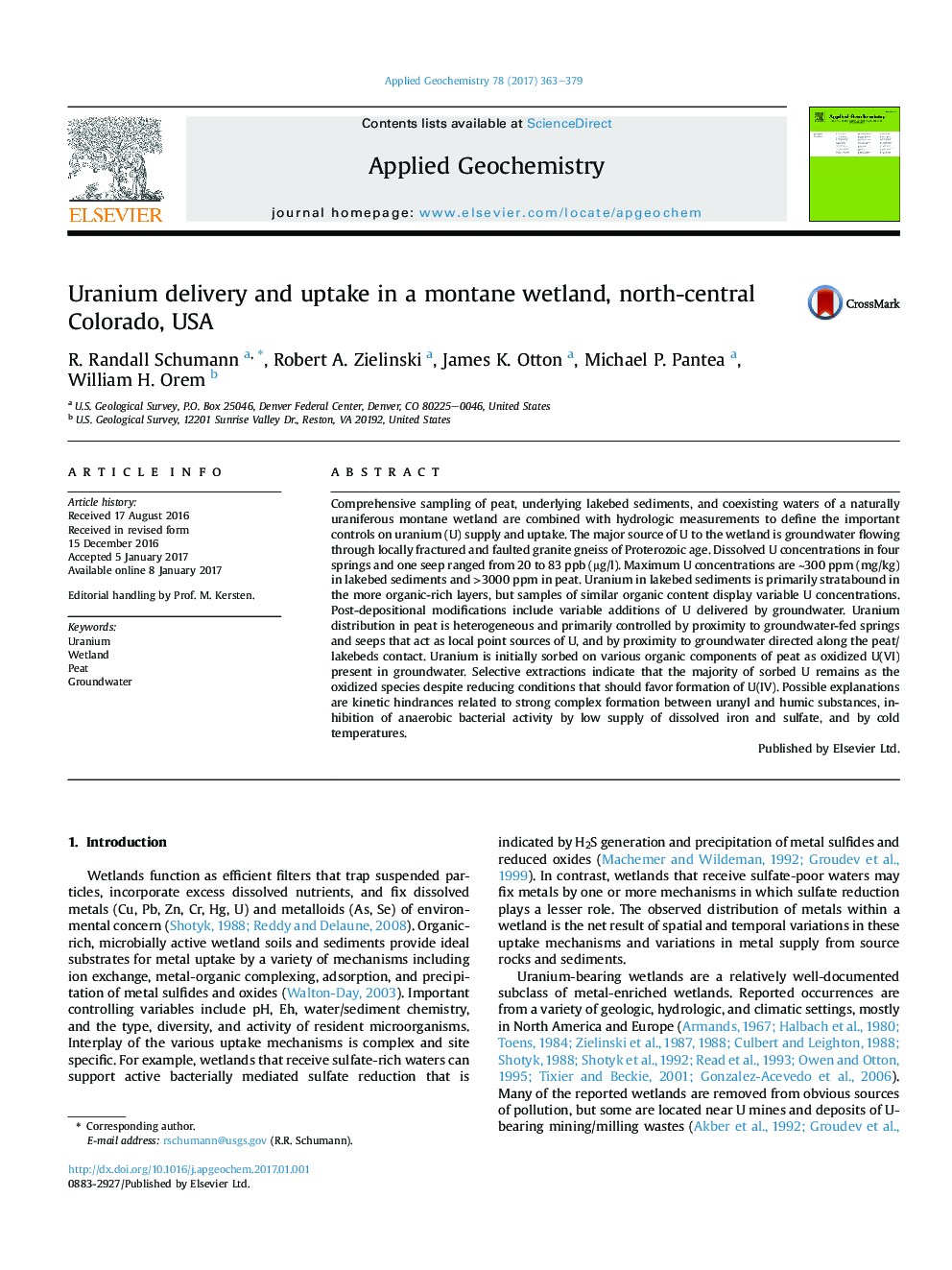| کد مقاله | کد نشریه | سال انتشار | مقاله انگلیسی | نسخه تمام متن |
|---|---|---|---|---|
| 5752698 | 1620213 | 2017 | 17 صفحه PDF | دانلود رایگان |
- Uranium concentrations in sediment and peat of a high-altitude montane wetland are â¼300 ppm (mg/kg) in lakebed sediments and >3000 ppm in peat.
- The major source of U to the wetland is groundwater flowing through locally fractured and faulted granite gneiss of Proterozoic age.
- Dissolved U concentrations in four springs and one seep that feed the wetland ranged from 20 to 83 ppb (μg/l).
- Uranium distribution in peat is primarily controlled by proximity to groundwater-fed springs and seeps, and by proximity to groundwater directed along the peat/lakebeds contact.
Comprehensive sampling of peat, underlying lakebed sediments, and coexisting waters of a naturally uraniferous montane wetland are combined with hydrologic measurements to define the important controls on uranium (U) supply and uptake. The major source of U to the wetland is groundwater flowing through locally fractured and faulted granite gneiss of Proterozoic age. Dissolved U concentrations in four springs and one seep ranged from 20 to 83 ppb (μg/l). Maximum U concentrations are â¼300 ppm (mg/kg) in lakebed sediments and >3000 ppm in peat. Uranium in lakebed sediments is primarily stratabound in the more organic-rich layers, but samples of similar organic content display variable U concentrations. Post-depositional modifications include variable additions of U delivered by groundwater. Uranium distribution in peat is heterogeneous and primarily controlled by proximity to groundwater-fed springs and seeps that act as local point sources of U, and by proximity to groundwater directed along the peat/lakebeds contact. Uranium is initially sorbed on various organic components of peat as oxidized U(VI) present in groundwater. Selective extractions indicate that the majority of sorbed U remains as the oxidized species despite reducing conditions that should favor formation of U(IV). Possible explanations are kinetic hindrances related to strong complex formation between uranyl and humic substances, inhibition of anaerobic bacterial activity by low supply of dissolved iron and sulfate, and by cold temperatures.
Journal: Applied Geochemistry - Volume 78, March 2017, Pages 363-379
